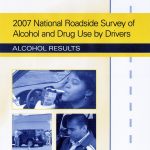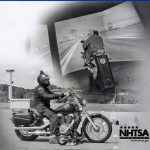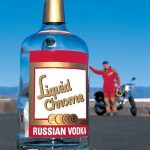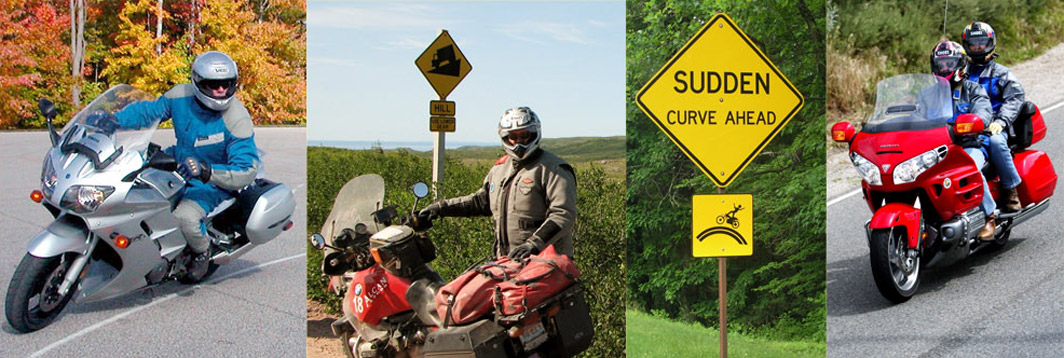Alcohol Impairment
Alcohol impairment is a substantial problem for motorcyclist operators, even more than for drivers of other motor vehicles. In 2021 some 28% of motorcycle operators involved in fatal crashes had BACs of .08 g/dL or higher, which is higher than the rate for passenger car drivers (24%) and light-truck drivers (20%) (NCSA, 2023). Fatally injured motorcycle operators 35 to 39 years old and 40 to 44 had the highest percentages of alcohol impairment (35% each), followed by motorcyclists 30 to 34 and 50 to 54 (33% each) and 50 to 54 (32%) (NCSA, 2023). An additional 7% of fatally injured motorcycle operators had at least some measurable level of alcohol in their blood (BAC .01 to .07 g/dL). Fatally injured motorcycle operators with BACs .08 g/dL or higher were less likely to wear helmets than were sober operators–52% versus 66%. In 2021 some 39% of operators killed in single-vehicle crashes on weekdays had BACs of .08 g/dL or above, and on weekends, this figure climbed to 46%. The 2013 and 2014 National Roadside Survey found that 5.0% of motorcycle operators on weekend nights had BACs of .08 g/dL or above, as compared to 1.4% of passenger vehicle drivers (Ramirez et al., 2016).
The above is from Countermeasure That Work, 11th edition, 2023, page 6-13.
Alcohol Impairment Research Studies
2022 – “Evaluation of Utah’s .05 BAC Per Se Law”
This is a research report by the National Highway Transportation Safety Administration. The goal of this study was to conduct a comprehensive evaluation of the impacts of the change in Utah’s per se law from .08 to .05 which went into effect December 30, 2018 . The specific goals were to document the legislative process that resulted law change; examine whether any changes occurred within Utah after the law revision in terms of: crashes and fatalities, impaired driving arrests, driver knowledge, perceptions, and attitudes toward drinking and driving, state education or prevention strategies, and alcohol sales and other economic indicators. The research found strong positive impacts and no negative impacts. Rationale Behind a .05 BAC Limit for Driving is a professionally researched and well referenced article that examines the rationale. Here is an excellent, well referenced Fact Sheet from Advocates for Highway and Auto Safety.
2022 – “Alcohol, Other Drug, and Multiple Drug Use Among Drivers”
This safety research report by the National Transportation Safety Board (NTSB) examines the crash risk associated with different drugs, including alcohol, and the prevalence of their use among drivers; it also discusses countermeasures to reduce impairment-related crashes. The NTSB identified five (5) safety issue made new recommendations to the National Highway Traffic Safety Administration; the US Food and Drug Administration; and the 50 states, the District of Columbia, and the Commonwealth of Puerto Rico.
2020 – “Investigating the Effect of Blood Alcohol Concentration on Motorcyclist’s Riding Performance”
It is largely accepted that drink-driving significantly increases the likelihood that a driver may engage in risk-taking behavior and thus road crash. This study is attempted to evaluate the effect of low BAC levels (i.e., _0.05 g/dL or 0.05) on riding performance of motorcycle riders in Vietnam using an advanced motorcycle riding simulator. At the level BAC = 0.05, all the performances are impaired and the negative effects become statistically significant.
2015 – “Alcohol-related Hospitalizations of Adult Motorcycle Riders”
The objective of this study was provide an overview of the demographic characteristics of adult motorcycle riders with alcohol-related hospitalizations. The study was conducted at Kaohsiung Chang Gung Memorial Hospital, a 2400-bed facility and level I regional trauma center that provides care to trauma patients primarily from the southern region of Taiwan. Motorcycle riders who consumed alcohol presented different characteristics and bodily injury patterns relative to sober patients, suggesting the importance of helmet use to decrease head injuries in alcohol-intoxicated riders.

2009 – “2007 National Roadside Survey of Alcohol and Drug Use by Drivers: Alcohol Results”
The survey found that 5.6% of motorcycle riders on weekend nights had BACs of .08 or above, as compared to 2.3% of passenger vehicle drivers.
2008 – “Effects of Alcohol on Motorcycle Riding Skills: Summary”
Traffic Safety Facts
2007 – “Effects of Alcohol on Motorcycle Riding Skills”
This study demonstrates some changes in riding behavior in response to alcohol consumption that may be construed as impairment relative to standard performance and the self-assessment of riders. Most of the impairing effects on riding performance were evident at the per se alcohol limit of BAC .08. However, some of these same impairing effects were also evident in the lower BAC .05 condition.

2007 – “Crash Risk and Alcohol Impairment Vol. II: Literature Review Report”
The National Highway Traffic Safety Administration sponsored a project (DOT HS 810 762) to investigate alternative methodological approaches for determining: (1) the relative risk of alcohol impaired motorcycle riders being involved in a crash and, (2) rider impairment at different BAC levels. The results of this project are reported in two volumes. This is Volume II, the literature review which discusses past research on impaired motorcycle operation, past research methodologies used to understand alcohol’s effects on human performance, and methodologies used to measure exposure in populations-at-risk. An appendix contains detailed descriptions of documents referenced in the report.
2007 – “Crash Risk and Alcohol Impairment Vol. I: Synthesis Report on Alternative Approaches with Priorities for Research”
This report (DOT HS 810 761) summarizes the project findings; including a detailed account of information discussed at an expert panel workshop convened for this project (experts were provided the literature review). Among the topics discussed at the workshop were the advantages, disadvantages, scientific validity, and costs related to each alternative methodology.
2003 – “Alcohol Involvement in Fatal Motorcycle Crashes”
This report examined trends and rates of motorcycle riders (motorcyclists) killed in motor vehicle crashes during the ten year period 1990-1999 and the research notes compared the trends and rates in the report with the 2000 and 2001 data. This research note focuses in detail on the problem of alcohol involvement in fatal motorcycle crashes based on who are involved, where and when the crashes occur and other crash characteristics.
2003 – “Drinking, Riding and Prevention: A Focus Group Study”
To identify effective prevention and intervention approaches, focus groups across the United States. The findings indicate that (1) riders often discourage their peers from riding after drinking, but a culturally reinforced respect for rider freedom and individual responsibility set boundaries for peer actions; (2) rider concern for the safety and security of the motorcycle nearly always overshadows concern for individual safety and contributes to drinking and riding; and (3) motorcycle impoundment and court-ordered payment of costs for vehicle storage, alcohol treatment programs, and other costs are considered persuasive countermeasures.

1999 – “Rolling Stoned: Experiments in Riding Drunk”
What happens when friends let friends ride drunk. Magazine staff were plied with liquor and then put on motorcycles. From the April 1999 issue of Motorcycle Cruiser Magazine, Posted 2009.

